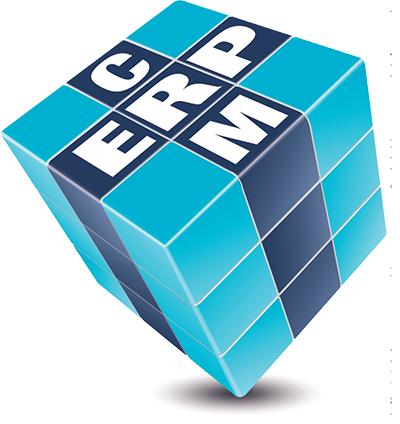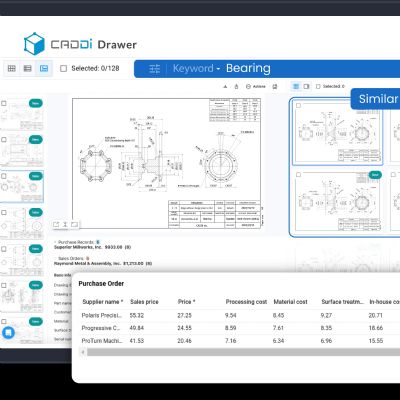Using an ERP System to Improve Sales
September 1, 2015Comments
ERP data can be employed in new ways to drive bottom-line success.
 For many, ERP suites serve as a costing tool configured to mine for operational efficiencies and assign costs to revolving tasks. When configured around business processes, ERP systems can eliminate unnecessary waste and improve compliance reporting.
For many, ERP suites serve as a costing tool configured to mine for operational efficiencies and assign costs to revolving tasks. When configured around business processes, ERP systems can eliminate unnecessary waste and improve compliance reporting.
Yet, while these results are solid for continued operations, such efficiencies do not necessarily directly subsidize revenue. Innovative companies will take a different approach to digital configuration, by mapping ERP systems to become more collaborative with other business functions. Enterprises now have begun to use their ERP systems strategically to improve sales and pricing strategies.
Using ERP Data to Improve Sales and Marketing
Modern ERP software can be a primary data source for sales and marketing strategies (primarily pricing and customer service). However, not all manufacturers view the software with these strategies in mind. Purchases made from inbound channels drive little profit. Instead of waiting for demand to happen, many innovative companies will ask how their ERP system can create new business opportunities using their end-customer information.
Consider this example: A manufacturer surveys the system to find purchase orders placed by a returning customer every three months for the last year. It’s nearing that time when the manufacturer should assume another order will be placed, along with many others. So, it plans the required changes to scheduling and capacity.
However, the current customer has yet to place the order. With access to this information, the sales department could already have docketed order history and seized the opportunity. More importantly, it can decrease the likelihood of a buyer making a purchase elsewhere. Sales then can structure attractive pricing to teeter the buyer’s decision in its favor. This is just one simple way ERP software, and its static data, can improve sales.
Make it Happen
Unfortunately, many enterprises have yet to structure a plan to use an ERP system to benefit their front-office systems. In some cases, sales and marketing users do not have access to ERP data remotely, or are subjected to work with a limited data capacity on a current legacy system.
In any case, some firms see these hurdles as justifiable, but should expect to see a string of latent issues challenge a modern sales and marketing force. What’s worse, sales executives tend to focus the scope of their strategy on market share; but the real proof is internal. Sales leaders should look to ERP account history and improve relationships between the firm and those 20 percent of customers who drive 80 percent of sales.
To improve market share, a much more logical use of data is to streamline account history, demand analytics, seasonal trending and nonconformance to marketing. Positioning, distribution, pricing and PR then are thoughtfully structured for market capture. ERP data can be used to price and position products for new market segments. The integration between marketing and ERP links forecasts to production. Operation managers then can better-forecast scheduling and capacity.
Pricing Strategies
Manufacturers also can use ERP data variances to gauge market elasticity and prompt the sales team to create price floors. This process provides sales people more room to vary pricing for unique customer situations. Similarly, this strategy allows the company to push higher prices while staying competitive. This provides sales people with room for healthy negotiation, while allowing them to speak to the needs of their customers.
ERP data suggest new pricing on a case-by-case basis. For a modern enterprise with these ERP configurations in mind, revenue can significantly increase. This pushes enterprises to improve vendor-client relationships and product accessibility, creating a competitive advantage. The perceived value then can be used to increase pricing and improve margins.
Another avid pricing strategy, becoming more apparent in modern business, is the use of ERP data to expedite same-day shipping and procurement. Mobile users should have access to inventory, shipping information and compliance certifications, to react to sudden changes in the marketplace. Adding this type of capability allows sales to place orders in real time. Accessibility to account data prompts an environment for suggestive selling of new products, services and warranties. Access to ERP also can move price contracts through the approval process in real time for a same-day signing. This added value also can be built into pricing, since customers find ease of order integral to their ongoing operations.
Integrating CRM and ERP
So how do businesses render such ample functionality? One solution is to integrate marketing and sales applications—CRM and marketing-automation software—and the ERP system. This allows marketing and sales to collaborate on how to structure nurturing campaigns. Users can automate reordering and ensure that account managers stay on top of accounts.
Such synchronized business processes provide these departments with access to ERP data that allow sales and marketing leaders to possess more control over fewer accounts with greater sales potential. Ultimately, this allows businesses to do more with the data that already exist inside their walls. MF
Technologies: Management









